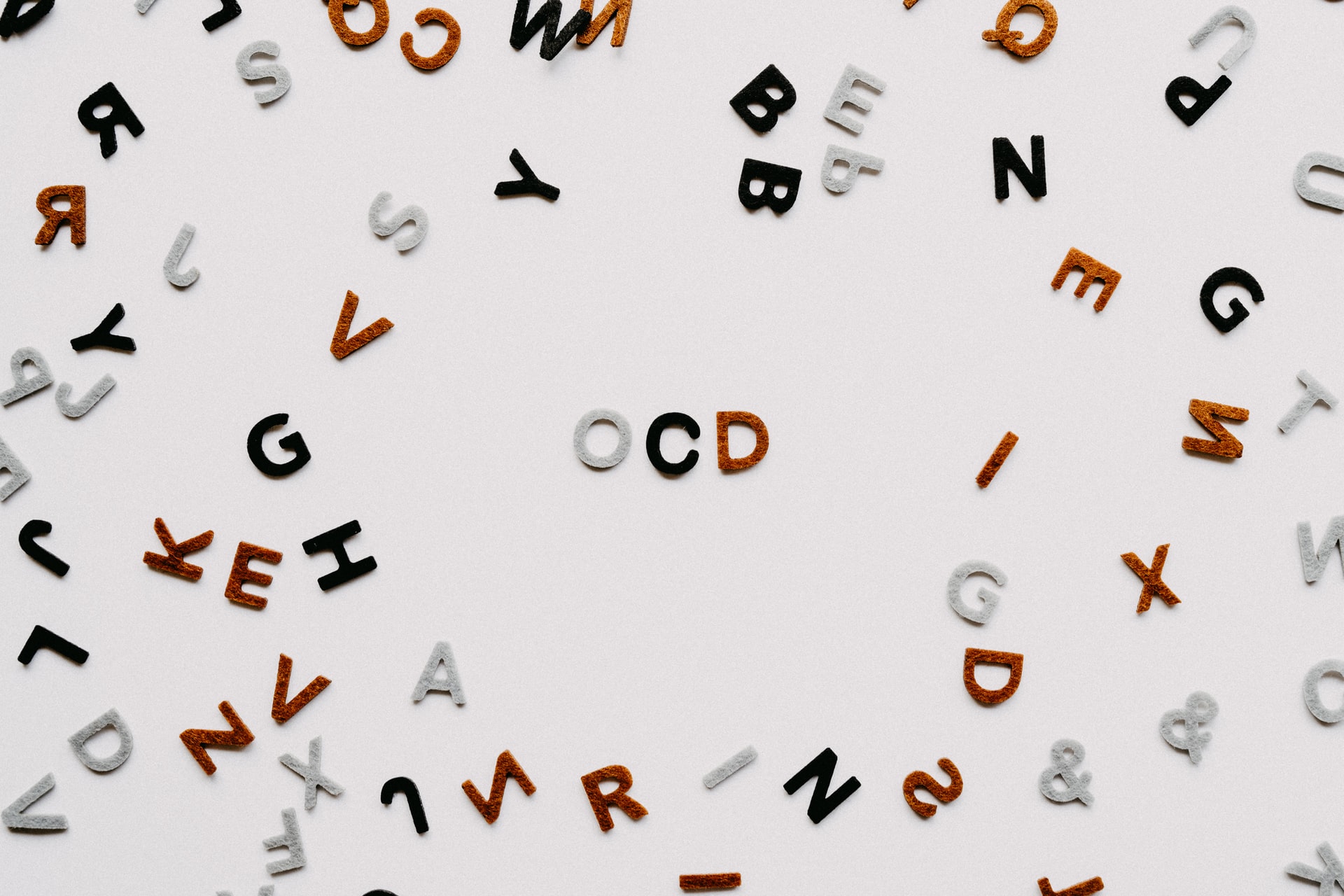A person with OCD experiences obsessions that are unwanted (intrusive thoughts, images, or urges) that trigger intensely distressing feelings. Compulsions are behaviors an individual engages in to attempt to get rid of the obsessions and/or decrease the distress. Obsessions are defined by:
1. Recurrent and persistent thoughts, urges, or impulses that are experienced, at some time during the disturbance, as intrusive and unwanted, and that in most individuals cause marked anxiety or distress. Individuals also experience compulsive urges that the individual feels driven to perform in response to an obsession or according to rules that must be applied rigidly.
2. The behaviors or mental acts are aimed at preventing or reducing anxiety or distress, or preventing some dreaded event or situation; however, these behaviors or mental acts are not connected in a realistic way with what they are designed to neutralize or prevent, or are clearly excessive.
Think of your body as a house, and your brain as the alarm system within the house. The alarm system is there to alert us when there is a potential threat, such as somebody breaking in. When the alarm system goes off, we react by waking up and doing something to protect ourselves.
A person living with OCD is like living in a house with a broken alarm system. A few drops of rain, a car driving by, or a bird landing on your window triggers the alarm system. That alarm system cannot determine the level of threat whether it’s a gust of wind or an intruder. Since it’s job is to keep you safe, it’s going to alert you for any potential threat, big or small. It cannot determine what is a real threat vs. a perceived threat.
This is how the brain of somebody with OCD operates. Your Amygdala cannot determine what is a real threat vs. a fake threat; therefore it shoots out chemicals such as Serotonin (which is responsible for regulating mood, appetite, sleep, and sex drive), Adrenaline (our fight or flight response) and Cortisol (our stress chemical). These three chemicals are what give us the physical symptoms of anxiety such as feeling jittery, rapid heartbeat, sweaty palms, shortness of breath, and an upset stomach. Since we are instinctively wired to pay attention to these physical symptoms, we immediately want to do something to relieve the anxiety. This may look like checking something twice, seeking reassurance, washing your hands, or engaging in any compulsive behavior. When we engage in compulsive behavior because we feel uncomfortable, we are reinforcing the behavior by strengthening the pathways within our brain. This makes the OCD worse. It may feel good for a few moments, but it is strengthening those pathways and making the obsession even stronger.
Types of OCD (Plus 5 Related Conditions)
People often think of obsessive-compulsive disorder (OCD) as a preoccupation with cleanliness or order. In reality, OCD can present in vastly different ways and many that are invisible to the outside observer. Below are brief descriptions of various types of OCD.
Hit and Run OCD
This type of OCD is marked by intrusive thoughts about having hit someone while driving. The thoughts can strike while still behind the wheel or sometimes much later. It can lead to retracing one’s route to make sure there are no signs of a recent accident or to avoiding driving altogether.
POCD (Pedophilia OCD)
POCD is characterized by thoughts, urges or images of sexual behavior with children. This type of OCD is particularly difficult because it’s associated with strong feelings of shame. Sufferers are understandably very uncomfortable telling others about their thoughts.
ROCD (Relationship OCD)
Relationship OCD is a term for OCD that centers on relationship obsessions. These involve doubt about whether your partner is the right person for you or about the depth and authenticity of your feelings for your partner.
HOCD or SO-OCD (Homosexual or Sexual Orientation OCD)
HOCD involves intrusive thoughts centered on one’s sexual orientation. The condition can affect men, women, or teens and can occur regardless of one’s actual sexual orientation.
Contamination OCD
This type of OCD involves a preoccupation with avoiding germs or contamination. Those with contamination OCD often fear sexually transmitted infections, but fear can also center on other conditions such as stomach flu, salmonella, or just illness in general.
Subtype: Mental contamination
People often distinguish between “contact contamination” (a feeling stemming from touching something) and “mental contamination” (coming from a thought, word, or phrase that feels bad, dangerous, or uncomfortable). Some recent research suggests that the two are distinct from one another. Approximately 10% of OCD sufferers with contamination symptoms experience mental contamination but not contact contamination.
Tourettic OCD
Some people with OCD experience compulsions that entail specific physical movements — like tapping their fingers or touching things in a certain way. These compulsions can be difficult to distinguish from motor tics, a symptom seen in Tourette’s Syndrome. This presentation of OCD is sometimes referred to as Tourettic OCD.
Checking OCD
Sometimes OCD involves checking compulsions. Checking stoves, electrical appliances, door locks, ovens and alarm clocks are all common examples of this compulsion.
Harm OCD
This involves impulses, urges, or mental images of harming others. People with harm OCD often describe having intrusive thoughts about stabbing, punching, or pushing others who are unable to defend themselves.
One particularly upsetting variant of harm OCD can be seen in new mothers who are horrified to have thoughts of harming or killing their babies. They can feel trapped by the difficulty of sharing their fears with others, especially if they have not had OCD symptoms before.
Scrupulosity (Including “Religious OCD”)
We all need to follow rules in life — at least sometimes. For people with scrupulosity, rule-following becomes a compulsion. Violating moral or religious rules becomes a fearful prospect. This often affects devotees of religions with a strong emphasis on rules or commandments. The fear of being damned or going to Hell can become a big part of life for people with with type of OCD.
“Just Right” OCD
Sometimes OCD creates compulsions to do things repeatedly until they feel “just right.” What those things are can vary; it can be repositioning an object, or repeating a bodily movement, or touching something over and over until the desired feeling is achieved.
Existential OCD
Existential OCD involves obsessive thinking about what’s real vs. what isn’t real, and generally about the nature of the reality in which one lives. People (and therapists) often mistake this type of OCD for other types of anxiety.
Confessing OCD
Confessing OCD can be a variant of relationship OCD or scrupulosity (both described above). In this form of OCD the dominant compulsion is confessing perceived transgressions typically to a parent or romantic partner. The transgressions may seem trivial or unimportant to others, but they serve to reduce anxiety in the person confessing.
Not OCD, But Related:
Hoarding
Hoarding is defined by difficulty parting with possessions — regardless of how valuable (or worthless) they are. This results in an accumulation of possessions that can be dramatic or even dangerous.
Mental health providers considered hoarding to be a form of OCD until 2013. Hoarding is now considered a “related disorder” to OCD.
Hair pulling
Sometimes plucking or pulling out hairs can become such a strong habit that it changes our appearance. Trichotillomania is the term used for when hair pulling is severe enough that it creates distress or obvious and problematic bare patches. It can involve the head, eyebrows, eyelashes, or anywhere there is hair. Trichotillomania is a related condition to OCD but is not OCD.
Skin picking
Picking the skin on our fingers, feet, face, or anywhere else is called “dermatillomania” or ‘excoriation disorder when it becomes a problem. When severe, dermatillomania can produce bleeding and lead to infections and permanent skin damage. This condition responds well to behavior therapy.
Cheek biting, cuticle biting, nail biting
These are examples of body-focused repetitive behaviors. They can be harmless when they happen infrequently. However, when they lead to bleeding and other difficulties, treatment can be helpful.
Perfectionism and OCPD
If high standards have stopped being helpful for you and have started to become a problem, you may suffer from perfectionism. Perfectionism doesn’t need to involve a conscious effort to be perfect. It often involves a rigid approach to getting things done that isn’t shared by others. In fact, the approach often bothers those around us.
When perfectionism becomes a dominant force in one’s life, a therapist may diagnose a condition known as obsessive-compulsive personality disorder. This condition is not OCD but often has some overlap. It takes longer to improve than OCD, but improvement is certainly possible.
TAKE THE NEXT STEP
If you think we might be a good fit, or would like to chat more before being scheduled, simply contact me.

